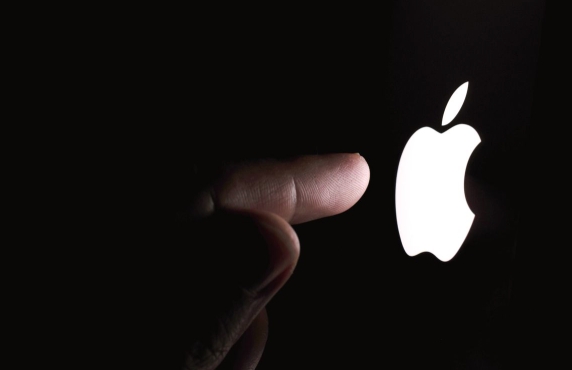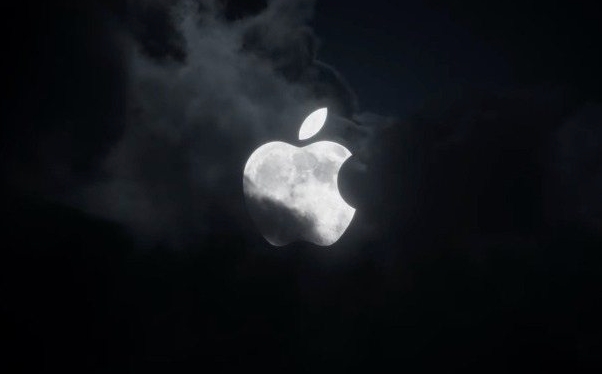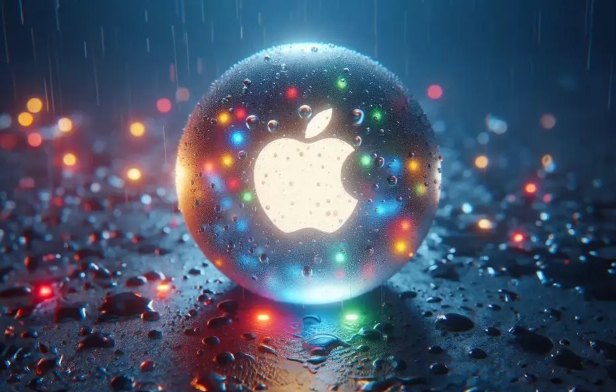OpenCore Legacy Patcher for macOS installation guide
Jul 19, 2025 am 01:26 AMIf the device is not in the official Apple support list, you can install macOS on old Macs through OpenCore Legacy Patcher (OCLP). The specific steps are as follows: 1. Confirm the device compatibility, such as MacBook Pro, iMac or Mac mini around 2012, and check whether the motherboard chipset supports EFI mode; 2. Prepare a 16GB or larger USB drive and create a macOS installation USB drive, write to the image using official commands or third-party tools; 3. Download and run OCLP, select the target device for patching, automatically resolve kernel expansion and driver compatibility issues, and manually adjust patch options if necessary; 4. Insert the patched USB drive, press the Option key during restart to enter the boot management interface to select USB drive startup, and select the APFS partition format during installation; 5. After installation, reserve the USB drive for the first boot, and install the complete driver package according to the prompts, adjust the BIOS settings according to the situation, such as turning off Secure Boot or enabling the CSM module. The entire process requires flexibly adjusting the patch settings according to the specific situation of the equipment to avoid copying other people's configurations directly.

When installing macOS, if your device is not on the official Apple support list, you may need to use some tools to implement it. OpenCore Legacy Patcher (OCLP) is a very practical solution that allows you to install and run new versions of macOS on old or unofficially supported Macs. This article will talk about how to use this tool.

Preparation: Confirm whether your device is compatible
Before you start, find out if your Mac is suitable for OCLP. This tool is mainly aimed at Mac devices that have stopped official updates, such as MacBook Pro, iMac or Mac mini around 2012.

- Check your model year and model
- Confirm whether the motherboard chipset supports EFI mode
- Make sure there is at least one available USB port for making the boot disk
Some devices may also require additional patches or replacement of network cards to use certain functions normally. You can go to the OCLP official GitHub page to view support list and precautions.
Create a bootable installation USB drive
OCLP itself cannot directly install the system, you need to prepare a macOS installation USB drive first. You can use Apple's official createinstallmedia command or third-party tools such as Install Disk Creator to complete this step.

The operation process is roughly as follows:
- Prepare a USB drive of 16GB or larger
- Download the macOS version image you want to install (recommended to use .dmg or .pkg format)
- Use the command line or tool to write the image to the USB flash drive
After completion, the USB drive can be used as the basic installation media. Next, you need to "patch" it with OCLP so that it can run on old devices.
Patch with OpenCore Legacy Patcher
After downloading and opening OCLP, the interface will automatically detect the current system version and hardware information. After clicking the "Patch" button, select the target device you want to patch (that is, your installation USB drive).
Key points:
- The patching process will automatically handle kernel expansion, driver compatibility and other issues.
- If your device has special needs (such as graphics card or network card issues), you can manually turn on the corresponding patch in the options
- After the patch is completed, the USB drive can be used as a bootable installation disk.
Some users may encounter black screen, restart failure, etc. At this time, it is recommended to return to the OCLP settings to turn off unnecessary driver add-ins, or try a different macOS version.
Installation system and subsequent configuration
Insert the patched USB drive, restart the Mac and hold down the Option key to enter the boot management interface. Select USB drive to boot to enter the macOS installer.
Some points to pay attention to during the installation process:
- APFS should be selected for partition format (if it is a newer version of macOS)
- Do not unplug the USB flash drive immediately after installation, as it may still be required to boot for the first time.
- It is recommended to install the complete driver package of OCLP after the first boot (usually prompted after the patch is completed)
Some devices may also need to adjust the BIOS settings after the first boot, such as turning off Secure Boot or enabling the CSM module. These settings vary by motherboard, and you can refer to the documentation provided by OCLP.
Basically these are the steps. Although it seems a bit complicated, most people can handle it as long as they take it step by step. The most important thing is to flexibly adjust the patch options according to your own device situation and not copy other people's settings.
The above is the detailed content of OpenCore Legacy Patcher for macOS installation guide. For more information, please follow other related articles on the PHP Chinese website!

Hot AI Tools

Undress AI Tool
Undress images for free

Undresser.AI Undress
AI-powered app for creating realistic nude photos

AI Clothes Remover
Online AI tool for removing clothes from photos.

Clothoff.io
AI clothes remover

Video Face Swap
Swap faces in any video effortlessly with our completely free AI face swap tool!

Hot Article

Hot Tools

Notepad++7.3.1
Easy-to-use and free code editor

SublimeText3 Chinese version
Chinese version, very easy to use

Zend Studio 13.0.1
Powerful PHP integrated development environment

Dreamweaver CS6
Visual web development tools

SublimeText3 Mac version
God-level code editing software (SublimeText3)

Hot Topics
 Detailed explanation of the installation steps of MySQL on macOS system
Apr 29, 2025 pm 03:36 PM
Detailed explanation of the installation steps of MySQL on macOS system
Apr 29, 2025 pm 03:36 PM
Installing MySQL on macOS can be achieved through the following steps: 1. Install Homebrew, using the command /bin/bash-c"$(curl-fsSLhttps://raw.githubusercontent.com/Homebrew/install/HEAD/install.sh)". 2. Update Homebrew and use brewupdate. 3. Install MySQL and use brewinstallmysql. 4. Start MySQL service and use brewservicesstartmysql. After installation, you can use mysql-u
 How to install AdobeReader on macOS
May 16, 2025 pm 08:33 PM
How to install AdobeReader on macOS
May 16, 2025 pm 08:33 PM
AdobeReader no longer supports macOS, and AdobeAcrobatReaderDC is required. 1) Visit Adobe's official website and download a version suitable for macOS. 2) Open the .dmg file, drag the icon to the "Applications" folder, enter the administrator password and complete the installation. 3) Start Adobe AcrobatReaderDC from the "Applications" folder.
 Fixing the 'Untrusted_Cert_Title' error during macOS installation
Jul 07, 2025 am 01:06 AM
Fixing the 'Untrusted_Cert_Title' error during macOS installation
Jul 07, 2025 am 01:06 AM
To resolve the "Untrusted_Cert_Title" error, you must first make sure to use the official certified installer and create it correctly. Secondly, check whether the system time settings are accurate, then update the firmware and bootstrap, and finally try to install macOS through the network recovery. The specific steps are: 1. Use the official AppStore installer and create a USB installer through Apple tools such as createinstallmedia to avoid manually copying files or using third-party tools; 2. After entering recovery mode, correct the date and time through terminal commands; 3. Check and update the EFI or firmware of the Mac to confirm that the hardware supports the target macOS version; 4. Long press Option Command R to start the network
 macOS could not be installed because the path /System/Installation/Packages/OSInstall.mpkg appears to be missing or damaged
Jul 06, 2025 am 01:04 AM
macOS could not be installed because the path /System/Installation/Packages/OSInstall.mpkg appears to be missing or damaged
Jul 06, 2025 am 01:04 AM
When encountering the prompt "macOS could not be installed because of the path/System/Installation/Packages/OSInstall.mpkgappearstobemissingordamaged", it means that the system installation package is missing or damaged during installation or upgrading macOS, which is common in old version recovery images, third-party boot disks or disk structure abnormalities; solutions include: 1. Confirm whether the boot media is complete, it is recommended to use the official createinstallmedia command to create a boot disk and check whether OSInstall.mpkg exists; 2. Select " from recovery mode"
 How to install macOS on a blank hard drive?
Jul 07, 2025 am 12:32 AM
How to install macOS on a blank hard drive?
Jul 07, 2025 am 12:32 AM
Installing macOS from scratch is not complicated, just prepare the tools and follow the steps. First, prepare a working Mac, at least 16GB USB drive, a stable network connection and sufficient time; secondly, it is recommended to use the createinstallmedia command in Terminal to create a bootable installer; then enter the installation interface through RecoveryMode or USB installer; then use DiskUtility to format the target hard disk as APFS or MacOSExtended; finally follow the prompts to complete the installation process.
 How to install macOS without an Apple ID?
Jul 14, 2025 am 01:19 AM
How to install macOS without an Apple ID?
Jul 14, 2025 am 01:19 AM
You can install macOS without using AppleID, but some functions are limited. There is no need to force login to AppleID during the installation process. You can create a local account to use the basic functions of the system. However, functions such as iCloud synchronization, AppStore download, and search for my Mac require AppleID to enable it. 1. When installing, you can use the USB drive to boot disk or recovery mode to create a local account; 2. Local account can browse web pages, edit documents, program development, and play media, but it is impossible to use iCloud and download most AppStore applications; 3. Skip AppleID to log in for the first time to create a local account; 4. Suitable for computer room equipment, development and testing, and privacy-sensitive users, and it is recommended to bind Apple to long-term use.
 How long does a macOS installation take?
Jul 03, 2025 am 01:06 AM
How long does a macOS installation take?
Jul 03, 2025 am 01:06 AM
AcleanmacOSinstallationtypicallytakes30minutestoanhour,butseveralfactorscanextendtheprocess.1)InternetRecoverymayadd15minutestooveranhourforOSdownload,dependingoninternetspeed.2)Installationtimevariesbetween20–40minutesafterdownloadcompletion.3)Stora
 OpenCore Legacy Patcher for macOS installation guide
Jul 19, 2025 am 01:26 AM
OpenCore Legacy Patcher for macOS installation guide
Jul 19, 2025 am 01:26 AM
If the device is not in Apple's official support list, you can install macOS on old Macs through OpenCoreLegacyPatcher (OCLP). The specific steps are as follows: 1. Confirm the device compatibility, such as MacBookPro, iMac or Macmini around 2012, and check whether the motherboard chipset supports EFI mode; 2. Prepare a 16GB or larger USB drive and make a macOS installation USB drive, write to the image using official commands or third-party tools; 3. Download and run OCLP, select the target device for patch processing, automatically solve the kernel expansion and driver compatibility issues, and manually adjust the patch options if necessary; 4. Insert the patched USB drive, press the Option key when restarting






